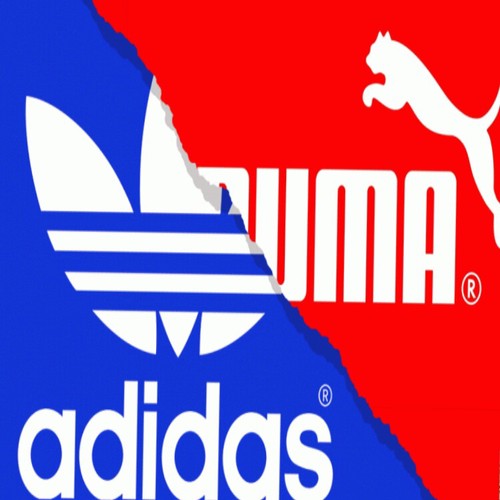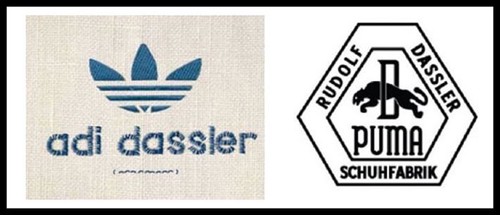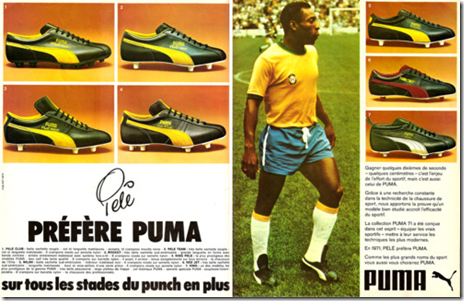
At present, advertising surrounds almost every possible aspect of human life. Wherever we go, wherever we turn, we will run into some advertising that tries to sell us a certain brand or product. The world of sports is one of those that has most exploited its marketing. It is common to see the big sports luminaries doing great publicity and receiving large sums of money for it. We usually see Cristiano Ronaldo or Messi wearing a certain brand of boots and signing million-dollar contracts for the use of his image.
Particularly in world of football, there are two companies that almost monopolize the entire world spectrum of sportswear, such as Nike and Adidas; while other companies such as Puma, Umbro, Kappa or Joma follow the rhythm to a lower level. However, the world was not always like that. There was a time when marketing within football was an unexplored arena where Adidas and Puma encompassed the global sports market. Two sister companies with the same start, a war without quarter that lasted for decades and that led to the greatest advertising strategy in the history of sport.
The beginnings of Adidas and Puma

In Germany, at the beginning of the 1920s, the brothers Adolf "Adi" Dassler and Rudolf "Rudi" Dassler created the company "Gebrüder Dassler Schuhfabrik". They made slippers and sports shoes. Adi was the introverted artist and Rudi was the public relations manager. Both managed to place their products on the German track and field team. But the master stroke was to sign Jesse Owens, the athlete who dazzled at the 1936 Berlin Olympics. At that time everything was rosy for the Dassler brothers, they had a growing and prosperous company.
However, the war came and changed everything. During the World War II the Dassler factory was transformed, like many others, to be a supplier of the Nazi Unified Armed Forces. Rudolf enlisted with the Nazi army, while Adi managed to dodge this and stay in the factory. Once the war ended and thanks to the American occupation, the business returned to prosper, due to the great devotion felt by Americans for the sport. However, Rudolf was called to declare his connections with the Nazi Party, which forced him to remain a year imprisoned and to move with his family to another place. Rudolf was convinced that his brother had betrayed him. This marked the breaking point between the two brothers and began the story of hatred between the two.
Rudolf Dassler founded his own company in 1948, which he called "Puma"; while Adi Dassler, already in full control of the company, renamed it "Adidas" in 1949. This name comes from the merger of his name (Adi) with the first syllable of his last name (Dassler). Rudolf took half of the workers (merchants) and Adi stayed with the other half (the artists). From there began the war without quarter between both brands.
The "Pelé Pact"

We are on the eve of the 1970 World Cup and after years of quarrels, dirty plays and low blows, both brands reached an agreement: None would try to sign Pele, the star of the moment. This was decided because they considered that requesting Pele's image would be a marketing error, because this would raise the costs of similar contracts with many other players. This agreement was known as the "Pelé Pact". "O Rei", totally unaware of the existence of this pact, came to the World Cup without any of the two brands as an official supplier of boots, for which he had to go to the small English brand Stylo .
For Rudolf the temptation to acquire Pele's advertising services was irresistible. He secretly sent his son Armin and wife along with Puma representative Hans Henningsen to negotiate with Pelé. They offered the Brazilian crack $25,000 for the remainder of the World Cup and $100,000 for the next four years, in addition to an important commission on the sales of new shoes that would carry the Pelé brand.
Henningsen, knowing that the figure of Pele was going to continue to grow during the development of the World Cup, devised a strategy that could not fail. After signing the agreement with Pele, it had an implicit action that needed the participation of Pelé himself. Trusting that the Brazilian would be the main protagonist of the World Cup, he asked Pelé that, minutes before his debut in Mexico, he asked the referee to stop the game. The reason? Tying the laces of his boots. At that time, in the first World Cup that was broadcast in color, all television cameras focused on the figure of "O Rei". And just as Pelé bent down to tie his boots, the world trembled. The cameras focused as the Brazilian crack calmly tied the laces of some brand new football boots that bore the brand of ... Puma. The rest is history.
The "Puma King Pelé" shot their sales by 300% and became the biggest masterful move in the world of sports marketing. Puma dealt a historic blow to his hated rival Adidas. This Puma action not only fueled his eternal struggle with Adidas even more, it marked a before and after in the history of sports marketing .
Today we have a lot more sports brands that dress and fit the best teams and players in the world. Far have been the days of black boots, which have been replaced by boots with endless colors and styles. And while it is true that Puma has been replaced by Nike as Adidas' main competitor in the global market, today's players owe them the advertising mega contracts they sign today, because Puma planted the start of this practice. Many say that the business of eating sports, but what we can be sure of is that the world of football was not the same since the break of the "Pelé Pact".
Comments